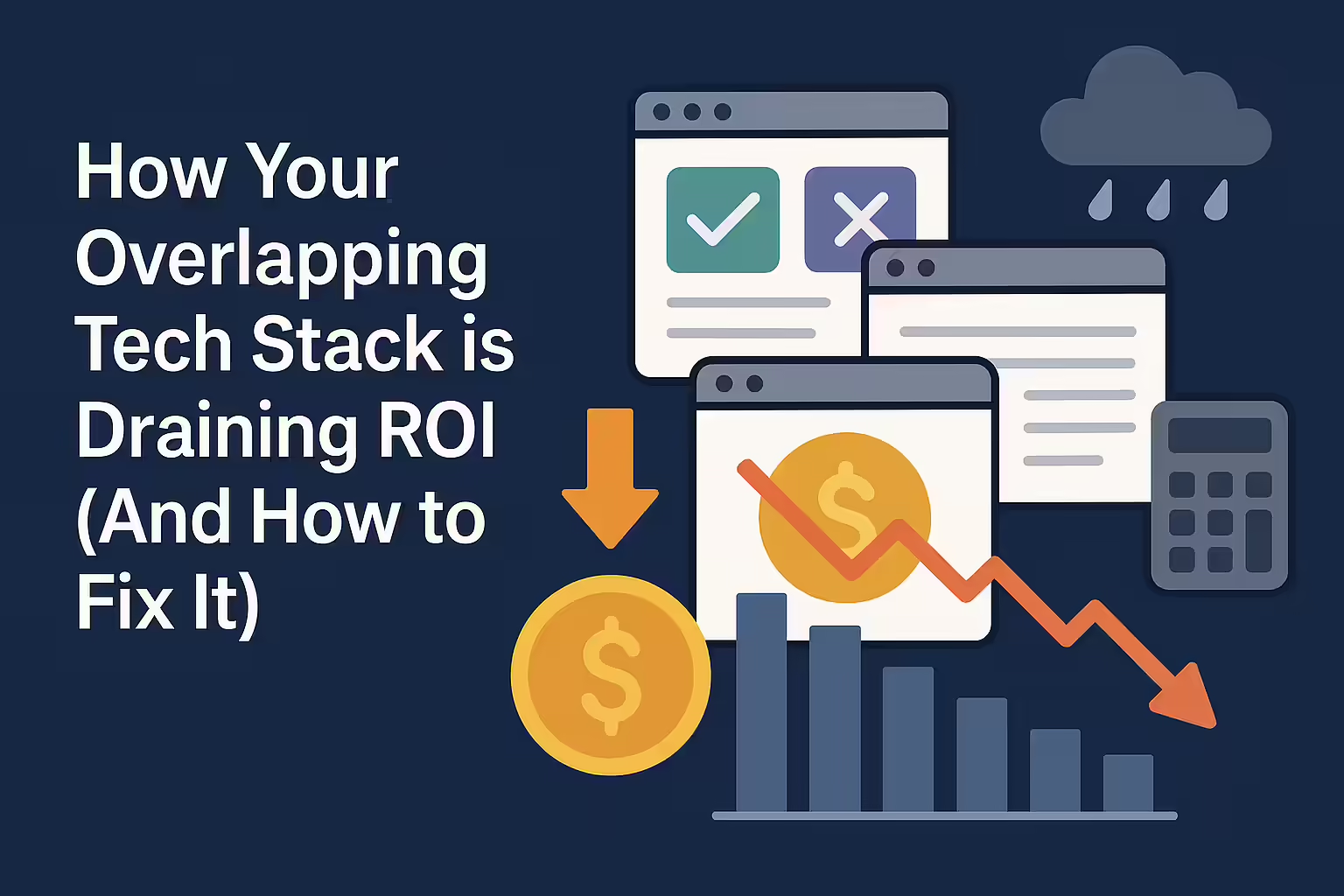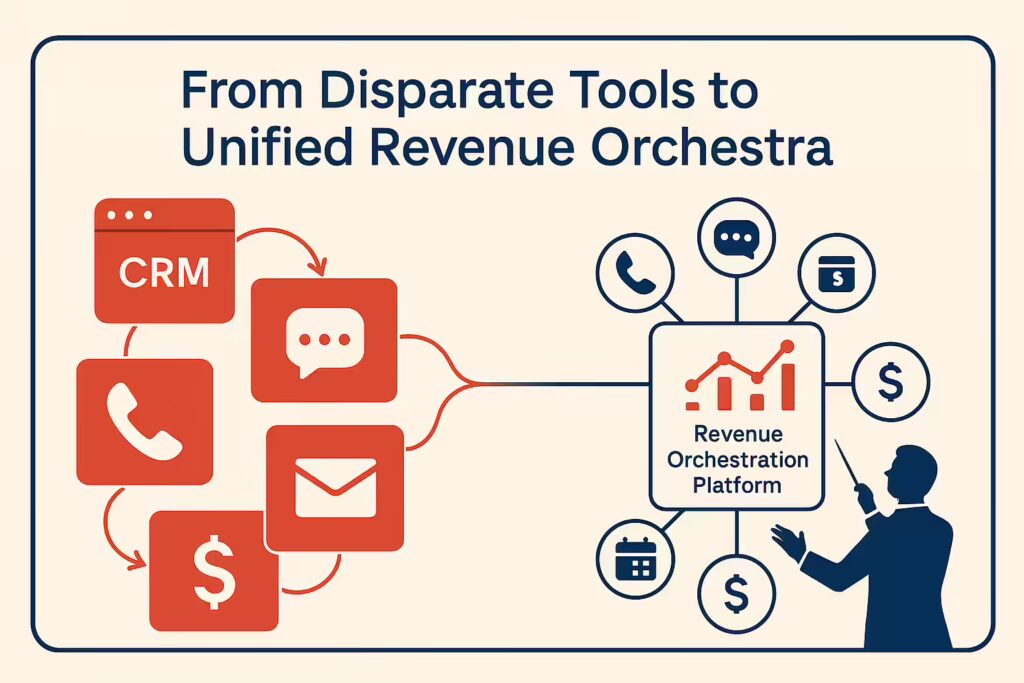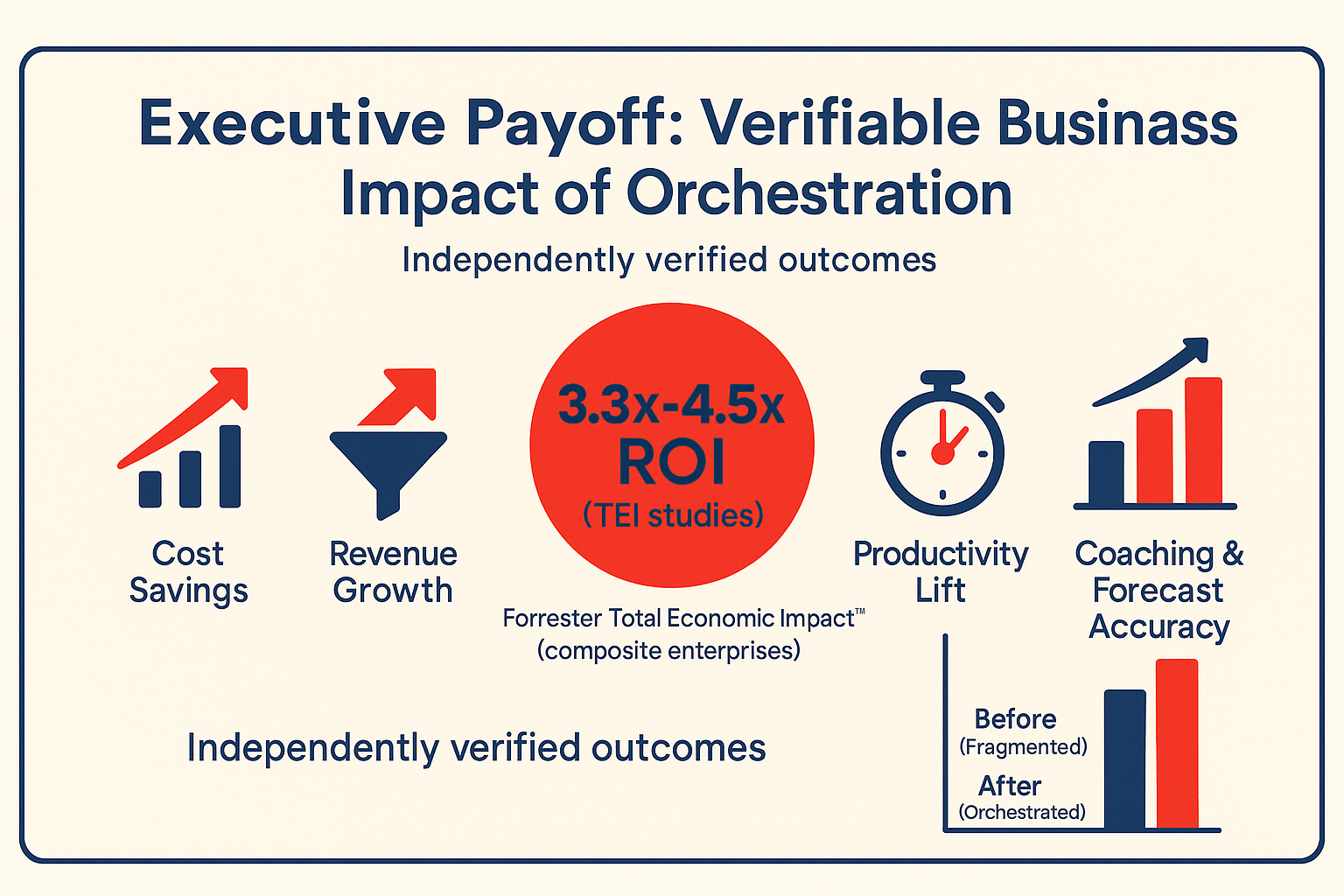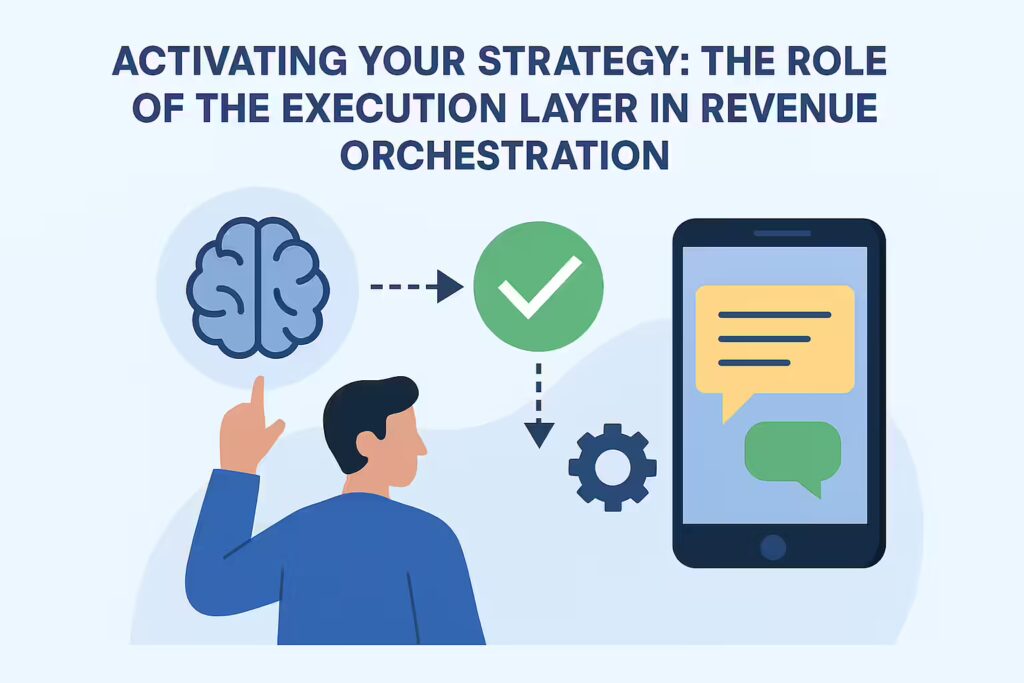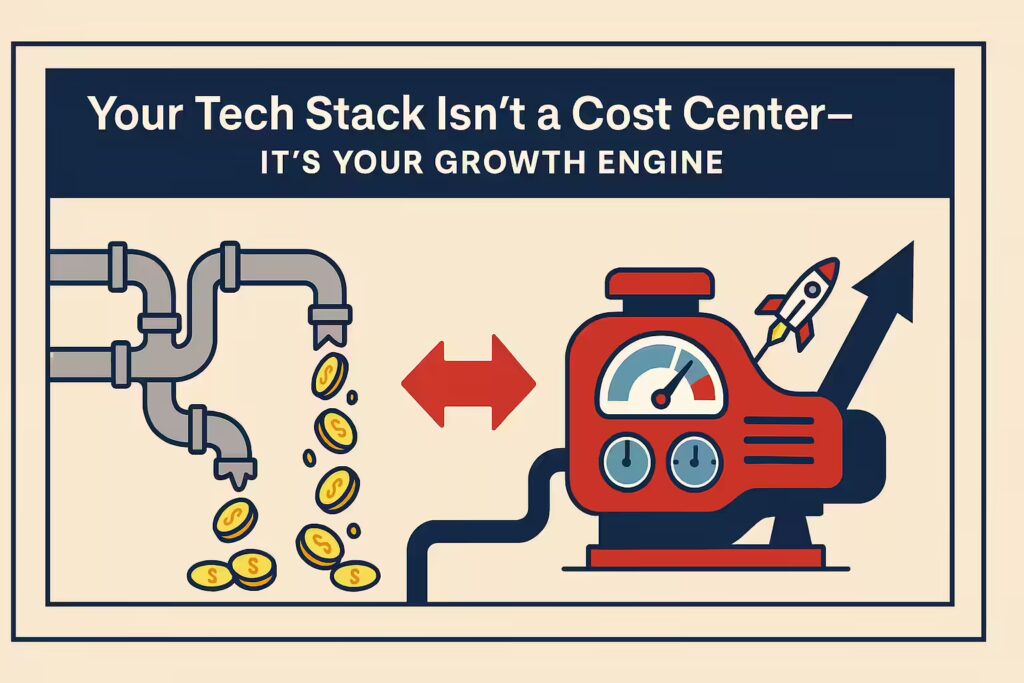The Hidden Tax on Your P&L That Your CFO Can’t See
In boardrooms and executive meetings, leaders track every line item on the profit and loss statement with precision. Yet, a significant and growing liability often escapes scrutiny, silently eroding margins and hindering growth. This liability is the “fragmentation tax”—a hidden cost levied on your business by a disconnected and overlapping technology stack. This is not merely an IT concern; it is a strategic and financial drag on the entire go-to-market (GTM) engine.
The scale of this issue is staggering. Independent research indicates that companies lose between 1% and 5% of their realized earnings before interest, taxes, and amortization (EBITA) annually due to revenue leakage, a significant portion of which stems directly from misaligned and disconnected systems. For a mid-sized or large enterprise, this represents a multi-million dollar blind spot. It manifests as wasted software spend, collapsed productivity, leaked revenue, and a crippling inability to innovate at the pace the market demands.
This report provides a leadership-level guide to understanding and combating the fragmentation tax. It will first quantify the four distinct dimensions of this hidden cost, building an irrefutable, data-backed case for why inaction is no longer an option. It will then introduce the definitive strategic solution that has emerged to solve this crisis: the Revenue Orchestration Platform (ROP). Finally, it will present the verifiable, third-party-validated return on investment (ROI) that organizations realize when they move from a state of technological chaos to a unified, orchestrated revenue engine.
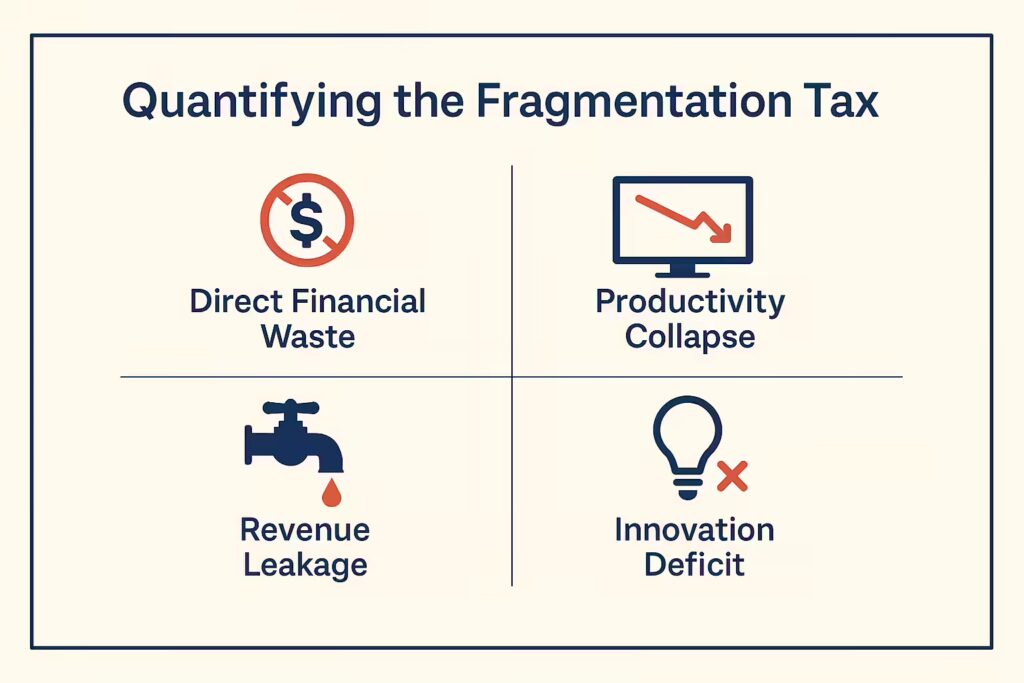
Quantifying the Fragmentation Tax: The True Cost of a Disconnected Go-to-Market Engine
The costs associated with a fragmented tech stack are not theoretical. They are quantifiable drains on financial resources, operational capacity, revenue potential, and strategic agility. Understanding these four dimensions is the first step toward reclaiming lost value.
The Direct Financial Waste (Technical Overhead)
The most visible symptom of a fragmented stack is redundant spending. In the pursuit of “best-of-breed” solutions, departments often acquire tools with overlapping functionalities, leading to significant financial waste that accumulates out of sight of central finance or IT.
The numbers are stark. In the United States alone, businesses waste nearly $30 billion per year on unused or rarely used software, with an average of $247 wasted per desktop. This problem is magnified at the enterprise level. A case study by Flexera of a single large enterprise uncovered 59 redundant SaaS applications, representing an astonishing $14 million—or 32%—of the company’s total annual SaaS spend. The analysis revealed that eliminating just
one of these redundant platforms would save the company $1 million annually. This illustrates how quickly and quietly these costs compound.
Further analysis shows that tool utilization rates are dangerously low. With martech utilization hovering at just 33%, most organizations are effectively wasting two-thirds of their investment on unused features, overlapping tools, and duplicated workflows. This waste is a direct result of decentralized purchasing, the rise of “shadow IT” where teams buy their own tools on credit cards, and a lack of strategic oversight that allows, for instance, three separate Human Capital Management (HCM) systems to exist within the same organization at a combined cost of $4 million per year.
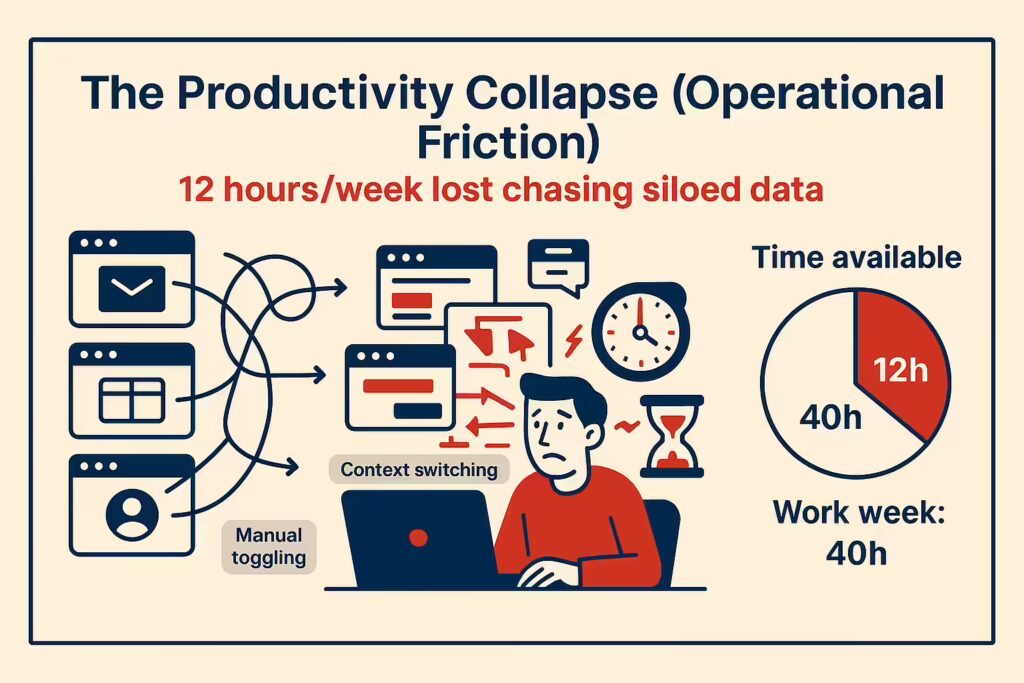
The Productivity Collapse (Operational Friction)
Beyond direct financial waste, a disconnected stack imposes a severe tax on employee productivity. When systems don’t communicate, the burden of bridging the gap falls to your most valuable asset: your people. Industry research reveals that employees waste an average of 12 hours per week—more than a quarter of their work time—simply chasing information trapped in disparate data silos.
For revenue-generating teams, the situation is even more dire. One survey found that sales representatives spend nearly 65% of their work time on non-selling administrative tasks, while another calculated the loss at two full days per week. This time is consumed by manual data entry, toggling between applications, and trying to reconcile conflicting information. This operational friction creates more than just inefficiency; it fosters a crisis of confidence. When sales, marketing, and customer success teams all pull reports from different systems with different definitions, no one agrees on the funnel math. Marketing questions whether sales is following up on leads, while sales loses trust in the quality of the leads being provided. This is not just a process problem; it is a massive opportunity cost and a direct hit to the operational leverage of the entire GTM organization.
The Revenue Leakage (Business Lag)
The friction created by a disconnected stack inevitably translates into lost revenue and a poor customer experience. The handoff between marketing and sales—one of the most critical moments in customer acquisition—is where the system most often fails. An estimated 79% of marketing-generated leads never convert into sales, primarily because they are not followed up on properly or in a timely manner—a direct consequence of disconnected systems failing to route them correctly or provide the necessary context.
This systemic delay creates a speed-to-lead gap with devastating financial consequences. Research shows that contacting a new lead within five minutes makes a sales team 21 times more likely to qualify them compared to waiting just 30 minutes. Yet, most companies lack the integrated technology required for such a rapid response.
Customers feel this internal friction directly. A recent study found that 46% of organizations report a negative impact on their ability to engage, support, and meet customer needs due to scattered data. This results in disjointed and frustrating experiences, such as a customer who is unhappy with a recent purchase being targeted with a promotional message for a new one. At a strategic level, this fragmentation cripples decision-making. A staggering 82% of companies admit to making critical business decisions based on stale, incomplete information because their systems are not integrated to provide a real-time, holistic view of the business.
The Innovation Deficit
Perhaps the most insidious cost of fragmentation is the long-term, strategic damage it inflicts. The “fragmentation tax” forces technology budgets and the focus of high-skilled personnel to shift away from value-creating innovation and toward low-value maintenance. Precious developer and IT hours are consumed by building and patching brittle, custom integrations and managing a sprawling portfolio of vendor relationships.
When a company’s tech stack changes more often than its GTM strategy, it is a clear sign that technology is dictating the business’s direction, not the other way around. This creates strategic rigidity. The organization loses its ability to adapt to market shifts, pivot its strategy, or scale new initiatives because its underlying systems create inertia, not momentum. It becomes a business managed
by its systems, rather than a business that actively manages its systems to achieve strategic goals.
This collection of siloed tools and fragmented data creates a self-perpetuating vicious cycle of mistrust and waste. It begins when disconnected systems, like a marketing automation platform and a CRM, create data silos. This structural gap leads to poor lead handoffs and a lack of shared context, causing sales teams to distrust the quality of marketing-generated leads. In response, individual teams often resort to “shadow IT,” purchasing their own point solutions to solve their immediate problems, bypassing central oversight. This action directly increases functional overlap and redundant software spending across the organization. The resulting increase in fragmentation only deepens the data silos, restarting the cycle with even greater cost, complexity, and erosion of cross-functional alignment.
The cumulative impact of these four dimensions is a significant, quantifiable drain on business performance.
The Executive Scorecard of the Fragmentation Tax
| Metric Category | The Hidden Cost to Your Business | |
| Direct Financial Waste | $1.3M – $14M+ in redundant software spend for a typical enterprise. | |
| 67% of martech investment is wasted on underutilized tools. | ||
| Operational Drag | 12 hours per employee per week are lost chasing siloed data. | |
| 65% of a sales representative’s time is spent on non-selling activities. | ||
| Revenue Leakage | 12% of total company revenue is lost due to poor-quality data. | |
| 79% of marketing-generated leads fail to convert due to poor follow-up. | ||
| Strategic Misalignment | 82% of companies admit to making critical decisions with stale data. | |
| 46% of organizations report a negative impact on customer experience. |
The Strategic Response: Moving from Disparate Tools to a Unified Revenue Orchestra
In response to the clear and escalating costs of fragmentation, a new category of technology has emerged, recognized and defined by leading industry analysts. This solution is not just another tool to add to the pile; it represents a fundamental shift in how businesses approach their entire GTM technology strategy.
The Emergence of a New Category: Revenue Orchestration Platforms (ROPs)
The term “Revenue Orchestration Platform” was coined by the analyst firm Forrester to describe a definitive market evolution. Forrester defines ROPs as technology that “enables B2B frontline resources to design, execute, capture, analyze, and improve buyer and customer engagement while optimizing productivity and internal revenue processes”. This is not a vendor-created buzzword but an official industry category born from clear market pressures: the executive demand for greater cost-efficiency, the need for better technology integration and adoption, and the cry from frontline sellers for more streamlined, effective workflows.
An ROP acts as the “central nervous system” or “command center” of the entire revenue operation. Its purpose is to harmonize and streamline revenue-related processes across sales, marketing, customer success, and even finance, ensuring every department is aligned toward predictable and scalable growth.
The Paradigm Shift: From Automation to Orchestration
To grasp the strategic importance of ROPs, it is crucial to understand the difference between traditional automation and modern orchestration.
Automation is linear and unintelligent. A standard automated workflow, such as a simple email nurture sequence, executes a series of pre-programmed steps regardless of context. It cannot adapt to new information or changing buyer behavior.
Orchestration, by contrast, is a dynamic and intelligent process. A true ROP unifies data from previously disparate sources—the CRM, call and meeting recordings, marketing engagement platforms, and real-time buyer intent signals—into a single, cohesive system. It then uses artificial intelligence (AI) to analyze this rich, composite data in real-time. The platform’s ultimate function is to translate this analysis into clear, actionable guidance for sellers. It “connects insights to action”. By doing so, it moves sellers from a world of guesswork and intuition to one of data-driven certainty, telling them precisely “what to do, when to do it, why to do it, and whom to do it for”.
The rise of the ROP signals a pivotal moment in GTM strategy: the end of the “best-of-breed” era and the dawn of the “best-of-platform” era. For years, the prevailing wisdom dictated that companies should purchase the top-rated point solution for every individual need—the best tool for email, the best for dialing, the best for analytics. However, as the analysis in the previous section demonstrates, the “fragmentation tax”—the immense cost of integrating, maintaining, and reconciling these disparate systems—eventually outweighed the benefits of any single tool.
Forrester identifies ROPs as a “supergroup” of technologies, representing the convergence of what were once three separate categories—sasales engagementconversation intelligence, and rerevenue operationsnto a single, unified platform. This convergence provides the “single pane of glass” that revenue leaders have long sought, solving the integration problem at its very core. Consequently, the strategic procurement question for forward-thinking leaders is no longer, “What is the best individual tool for this specific task?” Instead, it has become, “What is the best platform that can orchestrate our entire end-to-end revenue process?” This reflects a fundamental and necessary evolution in how businesses build and manage their growth engine.
The Executive Payoff: The Verifiable Business Impact of Orchestration
The strategic shift from a fragmented stack to a unified Revenue Orchestration Platform delivers tangible, independently verified business outcomes. The most credible evidence comes from Forrester’s Total Economic Impact™ (TEI) studies, which analyze the real-world results achieved by enterprise organizations after implementing these platforms. The findings are compelling, demonstrating massive returns across cost savings, revenue growth, and operational productivity.
Hard ROI and Radical Cost Savings
The financial case for ROPs begins with a powerful and immediate return on investment. A 2025 Forrester TEI study examining the impact of Salesloft’s ROP on a composite enterprise organization found a 3.3x ROI (a 336% return) over three years. A similar study on Clari’s platform calculated an even higher
448% ROI.
A primary driver of this impressive return is the immediate elimination of financial waste through technology consolidation. The Forrester study quantified that the composite organization saved $1.3 million in technology costs over three years by retiring redundant point solutions that were made obsolete by the unified platform. This directly addresses the direct financial waste dimension of the fragmentation tax.
Accelerated Revenue Growth and Pipeline Generation
While cost savings provide the initial justification, the true value of orchestration lies in its ability to accelerate top-line growth. The same Forrester study documented a series of dramatic improvements in core sales metrics. Organizations using the ROP:
- Improved closed-won rates by 12%.
- Achieved a 50% higher conversion rate from initial prospect engagement to a qualified sales opportunity.
- Created 2.5 times more pipeline and sales opportunities with the same team.
These improvements in sales effectiveness translated directly to the bottom line, generating $12.4 million in additional profit gains over three years, tied specifically to better response and conversion rates.
Transformational Productivity and Operational Leverage
Revenue orchestration platforms create significant operational leverage, allowing teams to achieve more without increasing headcount. The Forrester study found that the ROP drove a 40% increase in selling activities—such as calls and emails—with no change in the number of sales staff. This surge in efficient activity was not just busywork; it generated an additional
$10.9 million in operating profit over the three-year analysis period.
Furthermore, the platform’s ability to provide clear, data-driven insights into rep performance and deal health led to a 32% improvement in sales coaching productivity, as managers could finally provide targeted, effective guidance instead of relying on anecdotal evidence.
When analyzing these independently verified results, a crucial strategic conclusion emerges. While the $1.3 million in technology consolidation savings is attractive to any financial leader, it represents only a fraction of the total value created. The combined operating profit gains from improved sales effectiveness ($12.4 million) and increased selling activity ($10.9 million) amount to $23.3 million. This means the value derived from making the revenue engine more effective and efficient is nearly
18 times greater than the value from direct cost savings. This reframes the entire investment case. The conversation shifts from a defensive, cost-cutting exercise to an offensive, growth-driving strategy. A Revenue Orchestration Platform is not primarily a tool for saving money; it is a powerful weapon for amplifying revenue and creating sustainable operational leverage.
Table 2: The Forrester-Verified ROI of a Revenue Orchestration Platform
| Benefit Category | Quantifiable 3-Year Impact for a Composite Enterprise | |
| Overall Financial Return | 3.3x (336%) Return on Investment (ROI) | |
| $1.3 Million in technology cost savings from consolidation. | ||
| Revenue & Pipeline Growth | 12% improvement in closed-won rates. | |
| 50% improvement in conversion-to-opportunity rates. | ||
| 2.5x more pipeline and sales opportunities created. | ||
| $23.3 Million in combined operating profit gains. | ||
| Productivity & Efficiency | 40% increase in selling activity with no change in headcount. | |
| 32% improvement in sales coaching productivity. |
Activating Your Strategy: The Role of the Execution Layer in Revenue Orchestration
Adopting a Revenue Orchestration Platform is a critical strategic decision. However, the platform itself—the “brain” of the operation—is only part of the equation. To realize the full ROI documented by Forrester, the insights and guidance generated by the ROP must be translated into real-world action. This is where the execution layer becomes indispensable.
The “Last Mile” Problem: From Plan to Conversation
An ROP can brilliantly analyze billions of data points and buying signals to formulate the perfect play. It can identify a high-value prospect, determine the optimal time to engage, and even suggest the right message. But a plan remains purely theoretical until it is executed. The “last mile” of revenue orchestration is the critical step of turning that digital signal into a timely, contextual human conversation—a phone call or a text message.
This is the precise role of an intelligent communication and automation engine like Kixie. Within the broader ROP stack, Kixie functions as the “Execution and Feedback Layer”. It takes the intelligent recommendations generated by the central ROP and provides the tools—like an AI-powered parallel dialer and autautomated SMSquences—to execute them instantly and at scale.
Orchestration in Action: Making the Abstract Concrete
Consider a tangible, real-world example of orchestration in action. A company implements an Inbound “Hot Lead” Play designed to capitalize on peak buyer intent.
- The Signal: A high-value prospect submits a demo request form on the company’s website. This signal is captured by the CRM and analyzed by the ROP.
- The Orchestration: The ROP immediately triggers a workflow.
- The Execution: Kixie’s engine receives the trigger and auto-calls the lead via its power dialer in under 30 seconds, using a local presence number to maximize the chance of an answer. If the call is not answered, Kixie automatically sends a personalized SMS message and schedules the contact into a priority power-dialing session for the assigned representative later that day.
This seamless, multi-channel workflow is the essence of orchestration. It directly solves the speed-to-lead problem that causes nearly 79% of leads to go cold. It is the practical application that turns the strategic promise of an ROP into measurable results.
Closing the Loop: Solving the AI “Garbage In, Garbage Out” Problem
The intelligence of any AI-driven platform is entirely dependent on the quality of the data it consumes. This presents a significant challenge for many organizations; a staggering 78% of enterprise AI initiatives stall because business leaders do not trust their underlying revenue data. A fragmented tech stack is the primary culprit, feeding AI models with incomplete, siloed, and low-quality information.
An execution layer like Kixie is critical to solving this problem by serving as the Feedback Layer for the entire orchestration engine. It does more than just execute plays; it captures high-fidelity, ground-truth data from those interactions and feeds it back into the central system. Every call and SMS is automatically logged in the CRM. More importantly, the
outcomes of those interactions—call dispositions, AI-generated conversation summaries, sentiment analysis, and detected competitor mentions or objections—are systematically captured and piped back to the ROP’s data unification layer.
This process creates a virtuous cycle of improvement. Kixie enriches the ROP with real-world conversational intelligence, providing the high-quality data needed to make its predictive models and AI-driven recommendations smarter and more accurate over time. It ensures that the next orchestrated play is even more effective than the last. In this model, the execution layer doesn’t just follow the plan; it actively improves the planner.
Your Tech Stack Isn’t a Cost Center—It’s Your Growth Engine
The evidence is conclusive. Business leaders are faced with a clear choice. They can continue to pay the multi-million dollar “fragmentation tax” as a hidden and accepted cost of doing business, allowing it to silently drain profitability, stifle productivity, and leak revenue. Or, they can make a decisive strategic shift.
This shift requires a new mindset. The choice is no longer between dozens of individual, best-of-breed tools, but between two fundamentally different operating models: a fragmented, siloed, and reactive GTM motion that creates friction and waste, or a unified, intelligent, and orchestrated revenue engine that drives predictable growth and significant operational leverage.
Viewing this decision through the narrow lens of tool consolidation or cost-cutting misses the larger strategic opportunity. As the data from independent studies demonstrates, the primary benefit of revenue orchestration is not the money it saves, but the immense value it creates. The question for leadership is not “Can we afford to make this investment?” but rather, “Can we afford not to?” In today’s competitive landscape, the answer is clear. Your technology stack is no longer a cost center to be managed; it is the core growth engine of your business, and it must be architected for success.


